Sometimes you go somewhere and you find something completely unexpected, as is the case with the Chapultepec Castle in Mexico City.
 One of the most fabulous countries in the world, full of history and culture, Mexico has such a rich history, that it even includes a Habsburg Prince and a Mexican Indian revolutionary in the 19th century.
One of the most fabulous countries in the world, full of history and culture, Mexico has such a rich history, that it even includes a Habsburg Prince and a Mexican Indian revolutionary in the 19th century.
Today the Chapultepec Castle can be visited and is the site of the National Museum of History.
During the second half of the 19th century (1855-1861 approx.) Mexico was immersed in civil war and the war against the US for the northern territories.
It was in this period that two men, one Mexican and one Austrian were preparing to become rulers of Mexico. Only one would succeed.
Who is Benito Juárez?
Benito Juárez (1806-1872), one of the two men, was a Zapotecan Indian who studied law and reached public office in the liberal party of Mexico.
He is one of the most important figures in Mexican history and one of its heroes, with many monuments dedicated in his honor.
From 1858 to 1872 he served five times as president of Mexico, leading a liberal movement called La Reforma.
La Reforma aimed at the separation of the church, the army and the state, the better distribution of land and better education opportunities for the poor.
Benito Juárez resisted the French occupation of Mexico and the Second Mexican Empire.
Who is Maximilian I?
Maximilian I (1832-1867) was a Habsburg Prince, younger brother of Franz Joseph who was the future emperor for Austria-Hungary.
At 25 he took up the position of Governor General of the Lombardo Venetian Kingdom and married 17-year-old Charlotte of Belgium (1840-1927) the daughter of King Leopold of the Belgians who later adopted the name “Carlota” during their time in Mexico.
In 1859 his brother had dismissed him due to his liberal policies.
What happened during La Reforma?
There were basically two opposing powers in Mexico at the time, the Conservatives and the Liberals, fighting against each other to rule the country and driving it into a modern era.
In 1858 while the Liberal Ignacio Comonfort was president, the Conservative Party revolted, forcing him to resign.
By law, the then Minister of Justice Juárez became interim president and retreated to Veracruz to create his own government in exile which started the civil war that lasted three years.
In 1861 the Liberals regained power and Juárez became President by way of proper elections.
After the wars for the territory with the US and three years of civil war, Mexico was deeply in debt with several European countries.
Juárez then decided to stop paying this debt to France, since Mexico was bankrupt.
Some conservatives living in Europe suggested to the French Emperor Napoleon III that perhaps a good way to regain control over Mexico was to create a new Mexican monarchy ruled by European powers.
This would help bring the Conservatives to power again, France would get its money back, Juárez would be overthrown and the US would not be able to take over Mexico.
France invaded Mexico in 1862, with 10.000 troops (from Spain and England as well, though they retrieved later on) arriving in Veracruz.
Juarez declared that any invader and any Mexican helping invaders would be put to death, and so the Mexican people went into battle with all their bravery and nationalism.
On May 5th, 1862 the French were defeated in the Battle of Puebla, a date commemorated each year with the Cinco de Mayo festivity.
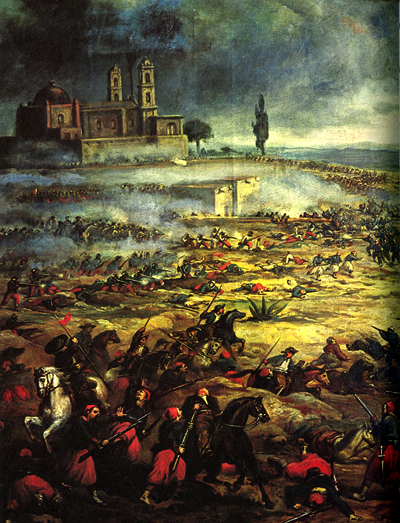
Battle of Puebla. Photo: Wikipedia.
In 1863 the French started to get control of the situation, forcing Juárez and his followers to flee to other areas of the country.
Maximilian I and Carlota enter the scene
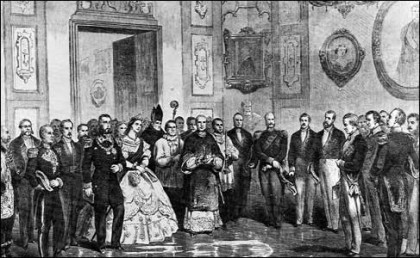
Maximilian receiving a deputation in the throne room at Miramar as he is offered the Crown of Mexico on April 10, 1864.
Photo: www.reformation.org
Napoleon III offered the crown of Mexico to Maximilian I which he accepted under two conditions:
One, that he would be protected by the French army and two, that he was accepted by the majority of the Mexicans.
He was sadly misled into believing that he had both.
Even though Maximilian I and his wife Charlotte of Belgium were progressive in their thinking about social justice, to the Mexicans they represented the French invasion.
They arrived to Mexico in 1864, taking their new position very seriously.
Carlota starts to learn Spanish and Mexican art and history, while Maximilian started to make some reforms, similar to those of Juárez.
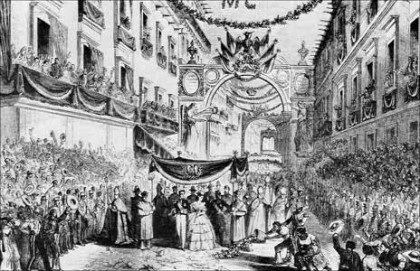
The staged reception for their imperial majesties as they entered Mexico City in regal splendor on June 12, 1864.
Photo: www.reformation.org
They also hosted lavish parties at the Castle in order to raise funds for charity.
But poor Maximilian I could not get a break
Maximilian’s liberal policies did not please the Conservatives (who had suggested the idea of a European Emperor in the first place) or the church that did not get their lands back.
Liberalists didn’t accept Maximilian either, since he had been imposed on top of the liberal government.
In the end, Maximilian ended up financing his own government with his inheritance and France took the customs revenue as payment for the Mexican debt.
In Europe, the formation of the nation of Germany initiated a war that required all the French troops back, including the troops that were in Mexico in 1866.
Carlota traveled back to France trying to convince Napoleon III not to withdraw the troops and trying to gather support from other royals, to no avail.
She suffered a mental breakdown that became an illness she endured for the rest of her life.
Still very much in love with Maximilian I, and manifesting symptoms of paranoia, she never came back to Mexico and remained in Europe ending her days in Belgium.
Meanwhile Maximilian I still believed he had the support of the Mexican people and in 1867 he traveled to Queretaro where he met his generals and went off to face Benito Juárez and his army.
They were arrested.
After a short imprisonment and trial, Juárez has Maximilian I executed in 1867 in Queretaro, along with his generals Miramón and Mejía.
The Chapultepec Castle
The Chapultepec Castle is a building from the viceroyal period (1785) designed as a retreat house for the Viceroy of the New Spain, Bernardo de Gálvez.
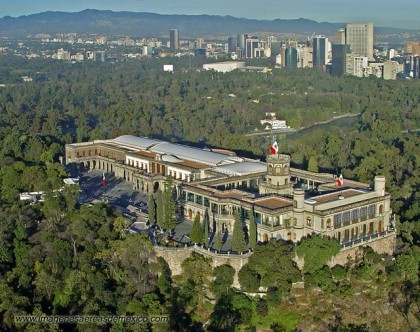
Aerial view of the Chapultepec Castle.
Photo: www.mexicovacationtravels.com
It is located in the first section of the Chapultepec Woods. Chapultepec means “Mountain of the Grasshopper” (Montaña del Chapulín).
Throughout the years it was modified and adjusted to meet several purposes.
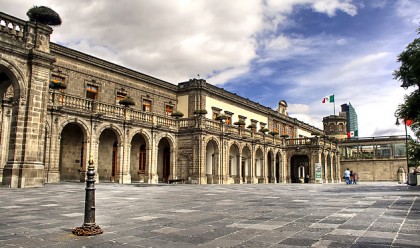
Entrance to the Chapultepec Castle. Photo: www.womansday.com
In 1859 it became the Imperial Palace and the residency of Maximilian I and Carlota, then Emperors of Mexico.

Stained glass windows at Chapultepec Castle.
Photo: worldrollup.blogspot.com
With the years, the Castle fell in disuse but in 1939 the Castle was set to function as museum.
The visit to the Chapultepec Castle
The Castle is divided into two areas: The Military School (where the tour begins) and the Alcázar, the residency of the Emperor itself.
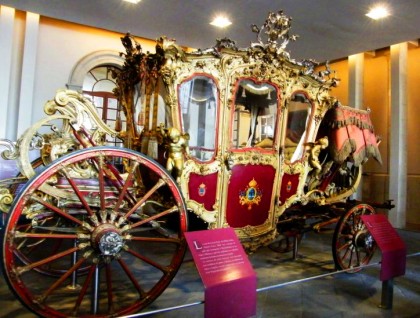
Carriage at Chapultepec Castle. Photo: mexicomystic.wordpress.com
The first part of the tour highlights images and objects of men and women from all walks of life who have influenced and created the Mexican nation.
Some of the rooms also feature works of art from 1933 to 1970.
The second part, the Alcázar, shows us the life inside the Castle at the time of Maximilian, with furniture, jewelry, paintings and other objects.

Interiors of the Chapultepec Castle.
Photo: worldrollup.blogspot.com
You can also see upstairs objects connected to later president Porfirio Díaz.
The Chapultepec Castle is a must see in Mexico City, it’s a very interesting contrast to all the pre-Columbian culture and the Latin American flavor.
Plus it gives an insight into the life of Maximilian I (and Carlota), sometimes criticized for being naive but also praised for his genuine intent to help the Mexican people, his refusal to abandoning them and his new and modern reforms to their government.
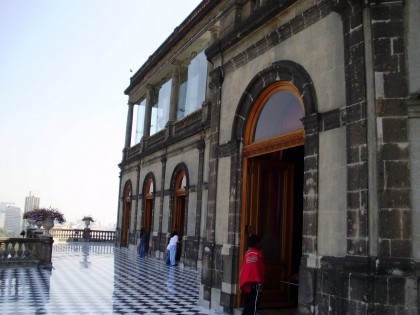
People seeing exhibits through the doors of the Alcázar at Chapultepec Castle. Photo: world-destinations.blogspot.com
Have you ever been to the Castle? Share your experience!
Did you know that it had such a sad but important story? Let me know in the comments field below!
Practicalities
- You can arrive to the Castle on the metro, getting off at Auditorio or Chapultepec stops. Chapultepec is the nearest and there’s direct access to the Castle.
- Your best shot is to get a taxi to the intersection of Paseo de La Reforma and Gran Avenida, and walk up hill passing by the Museum of Modern Art.
- You have to walk a short distance on a ramp to access the Castle. I’ve heard there are sometimes little carts for elderly people, that can take them up the hill.
- The entrance fee is about 5 dollars and it’s open from 9 am to 5 pm, Tuesday through Sunday.
- No big bags allowed, no taking notes, no eating, no flash pictures and no touching of the objects.
- Official website of the Chapultepec Castle.



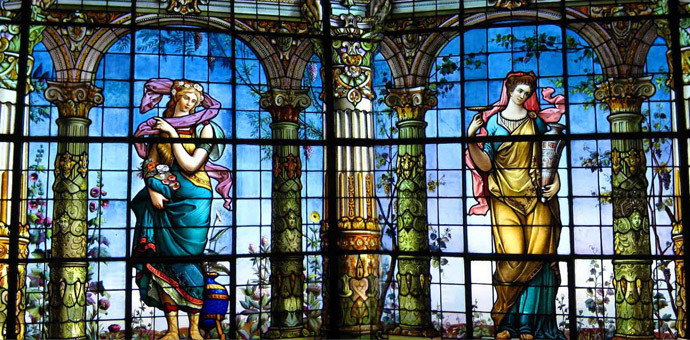
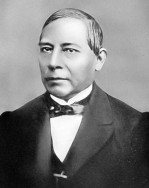
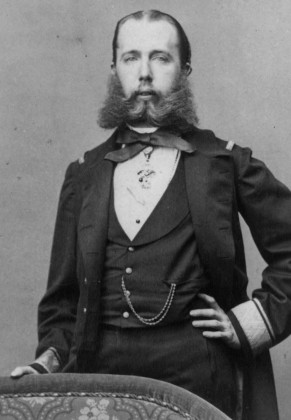
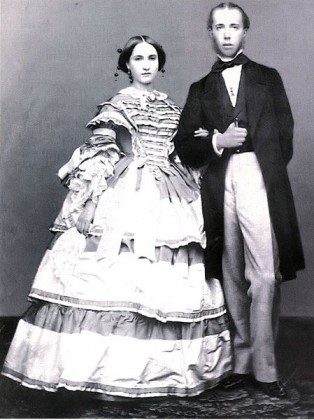
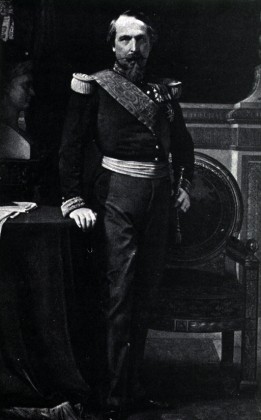
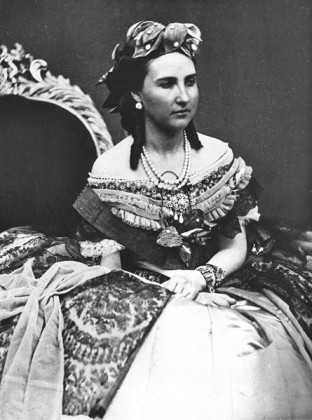
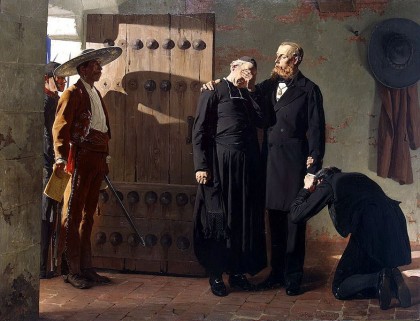
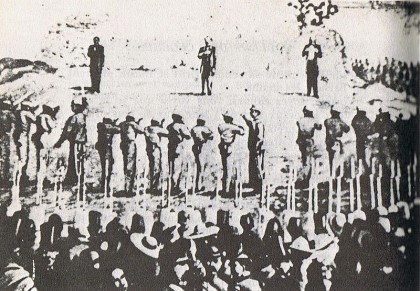
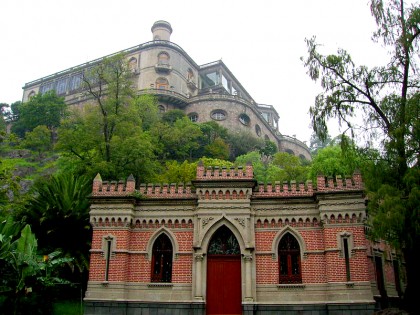
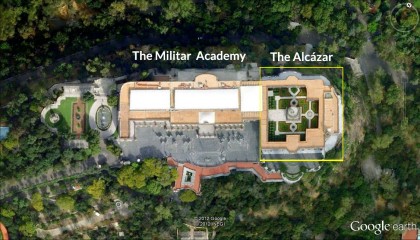
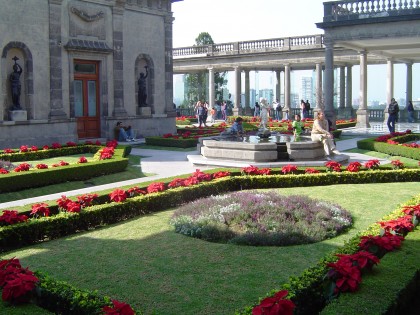




























[…] want to visit. The castle has some of the densest historical action imaginable. Statesmen including presidents and emperors used to live there, and with good reason. The castle itself is absolutely stunning. Trimmed with […]
I spent an entire day at the castle back in 1980 during a 3.5 month vacation in Mexico so my memory is not perfect. However, after Guanajuato, San Miguel de Allende and Oaxca, Chapultepec Castle was one of my favorite places in all of Mexico. What I remember most is the endless collection of amazing, elaborate and intricate pocket watches and clocks that Maximilian had accumulated. It literally took an entire day to view all of them.
If there were not several thousand great things to see/places to visit in the world, I would go back to the castle and spend an additional full day.
Sounds like you han an amazing time, Allen! I love Mexico, there is just soooooo much culture! So much to see and do! And the food and the people and the history, oh, my! Love love love it! I hope I go back to Chapultepec one day too! Thanks for your comment!